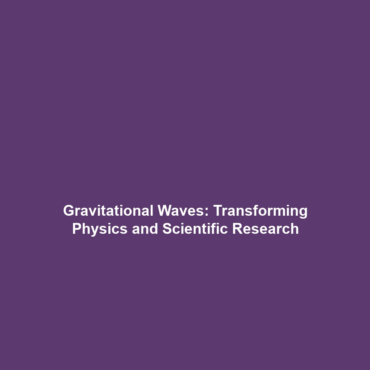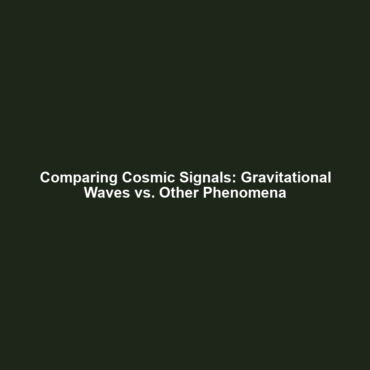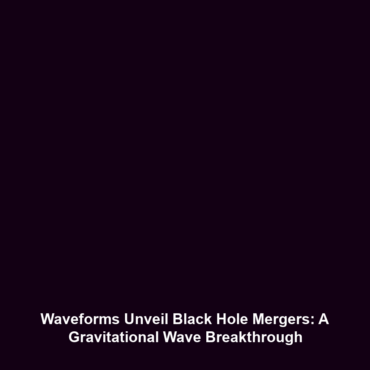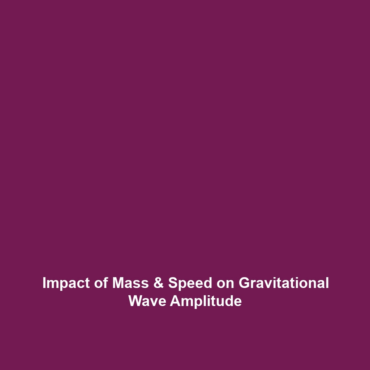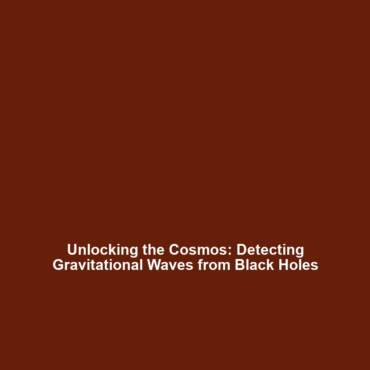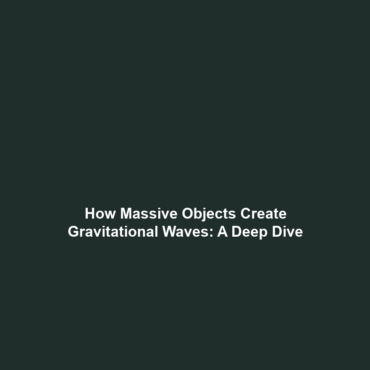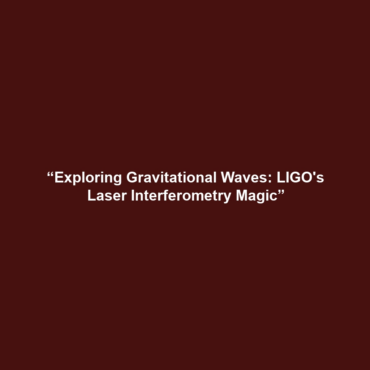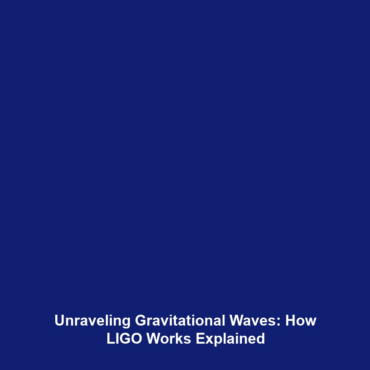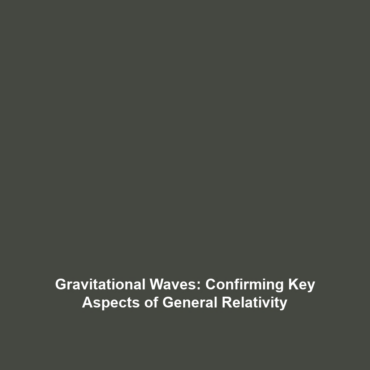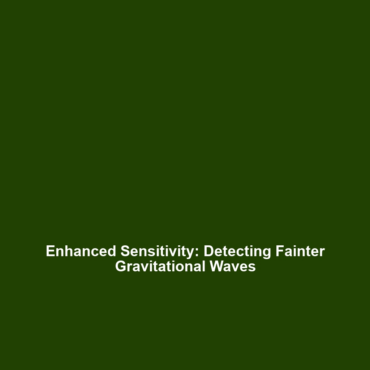Impact on Physics: What the Detection of Gravitational Waves Means for the Scientific Community
Introduction
The detection of gravitational waves marks a transformative moment in modern physics and astronomy. These ripples in spacetime, predicted by Albert Einstein over a century ago, provide a revolutionary method for understanding the universe and its origins. The scientific community is buzzing with excitement as researchers now possess a novel tool to explore phenomena that were previously unreachable. This article examines the profound implications that gravitational wave detection has on physics, encompassing its significance, challenges, and potential future explorations.
Key Concepts
To appreciate the impact of gravitational waves on physics, it is essential to understand several key concepts:
- Gravitational Waves: These are disturbances in spacetime produced by some of the universe’s most violent and energetic processes, such as merging black holes or neutron stars.
- The General Theory of Relativity: Einstein’s theory predicted the existence of gravitational waves, fundamentally altering our understanding of gravity and its interactions.
- Detection Methodologies: Major detectors like LIGO (Laser Interferometer Gravitational-Wave Observatory) employ advanced technology to capture the minuscule effects of gravitational waves as they pass through Earth.
Applications and Real-World Uses
The detection of gravitational waves fosters numerous applications within the field of physics:
- Astrophysics: Gravitational waves offer insights into cosmic events such as supernovae and neutron star collisions, allowing scientists to observe the universe’s behavior beyond electro-magnetic light.
- Tests of General Relativity: The precise measurements of gravitational waves provide a form of test for Einstein’s theory, enhancing our understanding of gravitational phenomena.
- Multi-Messenger Astronomy: The integration of gravitational wave astronomy with other fields like electromagnetic observations deepens our understanding of cosmic events.
Current Challenges
Despite the excitement around gravitational waves, challenges exist in studying and applying this knowledge:
- Noise Interference: Environmental and technical noise can hinder the detection process, making it difficult to discern gravitational waves from background signals.
- Technological Limitations: Current detection equipment, while advanced, is limited in range and sensitivity, prompting the need for improved technologies.
- Data Interpretation: The analysis of data generated by gravitational wave detections requires sophisticated algorithms and expert knowledge, posing a challenge for researchers.
Future Research and Innovations
Looking ahead, the future of gravitational wave research is promising, with numerous innovations on the horizon:
- Next-Generation Detectors: The development of advanced gravitational wave detectors aims to enhance sensitivity and broaden detection capabilities.
- Follow-Up Observations: Combining gravitational wave signals with electromagnetic observations will provide a more comprehensive picture of astronomical events.
- Interferometry Techniques: Emerging interferometry techniques may one day enable detection from space, opening new frontiers in gravitational wave astronomy.
Conclusion
The detection of gravitational waves not only validates fundamental theories in physics but also propels scientific discovery into uncharted territories. As we enhance our capabilities to observe the universe, the significance of gravitational waves will undoubtedly grow, offering profound insights into cosmic events and the nature of gravity itself. For those intrigued by the ongoing advancements in this field, further reading on the implications of gravitational waves on astrophysics and cosmology is recommended.
